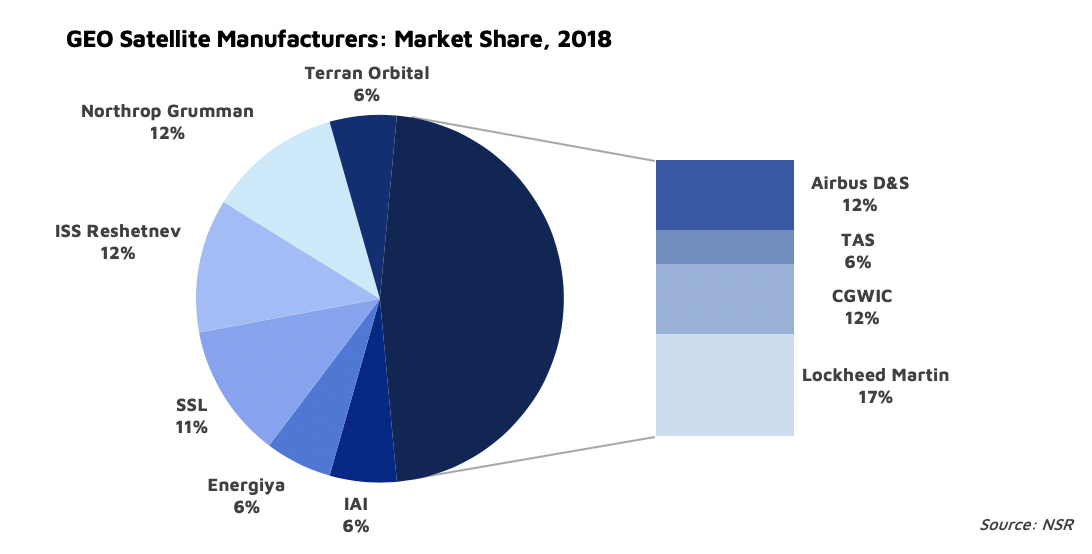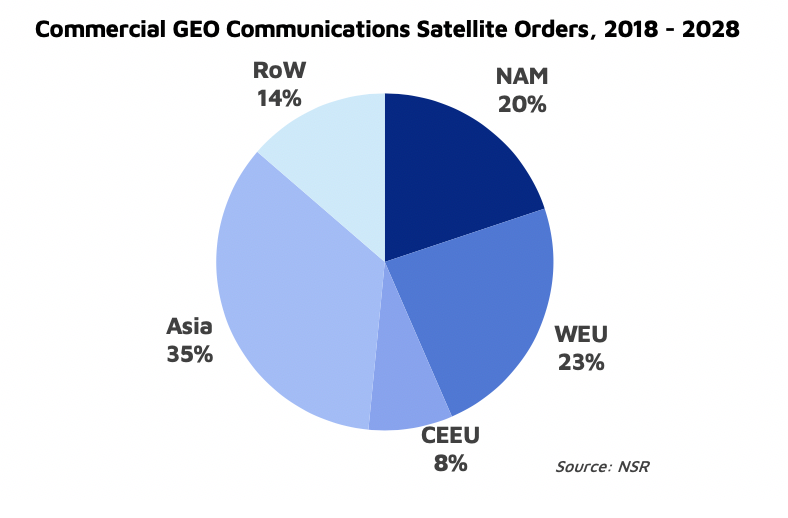The “New Normal” in Satellite Manufacturing & Launch
Satellite manufacturing and launch markets are evolving at rates never seen before. With a bevy of actors entering the satellite market at different levels of the value chain, the new dynamic is changing the way this industry measures growth – with the number of satellite orders and price/ kg losing relevance as market indicators. In this market dynamics where customer preference and priorities vary greatly, from time to orbit to low cost, quick adaptability and prudent pricing strategies by the players may be the key to future market success.
Declining capacity prices seen in the past years and uncertainty around the long-term success of LEO constellations has resulted in declining number of GEO satellite orders in the recent years. As the industry looks for a new normal, different operators are adopting different strategies, ranging from high cost, high throughput satellites to generic, software-defined and small GEO satellites. The ability of satellite manufacturers to meet the tailored needs of the market has certainly increased the demand to an average of 13 – 15 GEO communication satellite orders per year, as NSR reported in its recently released Satellite Manufacturing and Launch Services, 9th Edition report.


While demand for GEO orders over the next decade is expected to remain stable, overall market revenues will continue to experience an overall decline as manufacturers aim to lower their efficiency ratio by adopting more cost-efficient processes. As such, satellite order numbers are no longer a relevant market indicator, and revenues only tell one side of the story. The ease and speed at which players adapt to this fast changing environment, through M&A’s, cost efficient processes and flexible product offerings, will determine success of the players and the overall market.
The satellite launch market is at the same time going through a period of transition and will experience more competition and diversity over the next decade. Depending on the diverse customer priorities, such as the target orbit, altitude, time to orbit and cost, the launch service providers are offering different options from dedicated launch to rideshare to dedicated rideshare. In addition, launch providers are adopting different approaches including reusability, sea launches and partnerships with companies offering last mile delivery to lower the internal costs and offer better services to the customers.
The manufacturing and the launch sides of the market are both adopting different strategies to meet and exceed the customer demand, by lowering their costs and offering more flexible solutions. But adaptability is only one piece of the puzzle – the second piece is the pricing strategy. Not all customers are alike, and not all have the same needs and as such, the traditional $/kg pricing standard is becoming obsolete. Industry experts at NSR’s session “Is small sat bubble about to pop” at the SmallSat conference in Utah confirmed the prices are becoming more mission specific, and the players are trying to figure out the new standard.
Price discrimination is a strategy where the customers are grouped based on certain attributes, with each group charged at a different price. The 2nd degree price discrimination, where companies are charged based on the quantities ordered, is already in use in the industry, associated with satellite constellation orders. But with demand becoming more customised and a growing number of players selling their services based on the price tolerance of the customers, is the 3rd degree price discrimination – where different groups of customers are charged a different price for the same service – becoming the new pricing “standard”?
Bottom Line
The emergence of “New Space” players is changing the way the growth of the satellite manufacturing and launch markets is assessed. The traditional indicators and standards such as the number of satellite orders and $/kg are rapidly becoming obsolete to give way to adaptability and innovative pricing. In the end, the growth of the overall market will rely on how well the different market players can adapt to this rapidly changing environment and tailoring pricing strategies based on customer type and their priorities.
